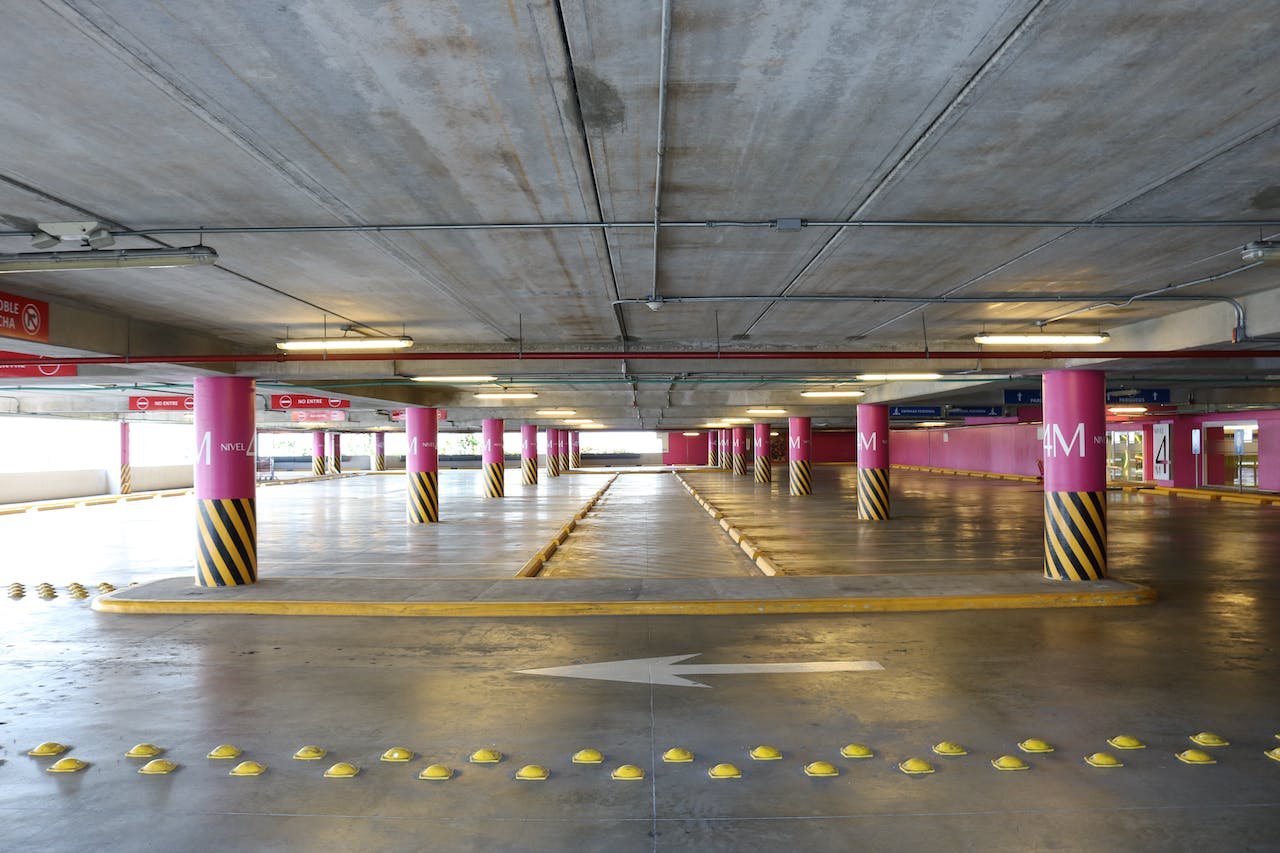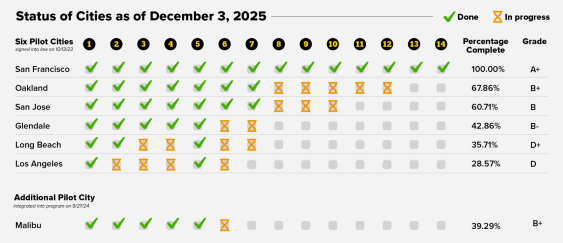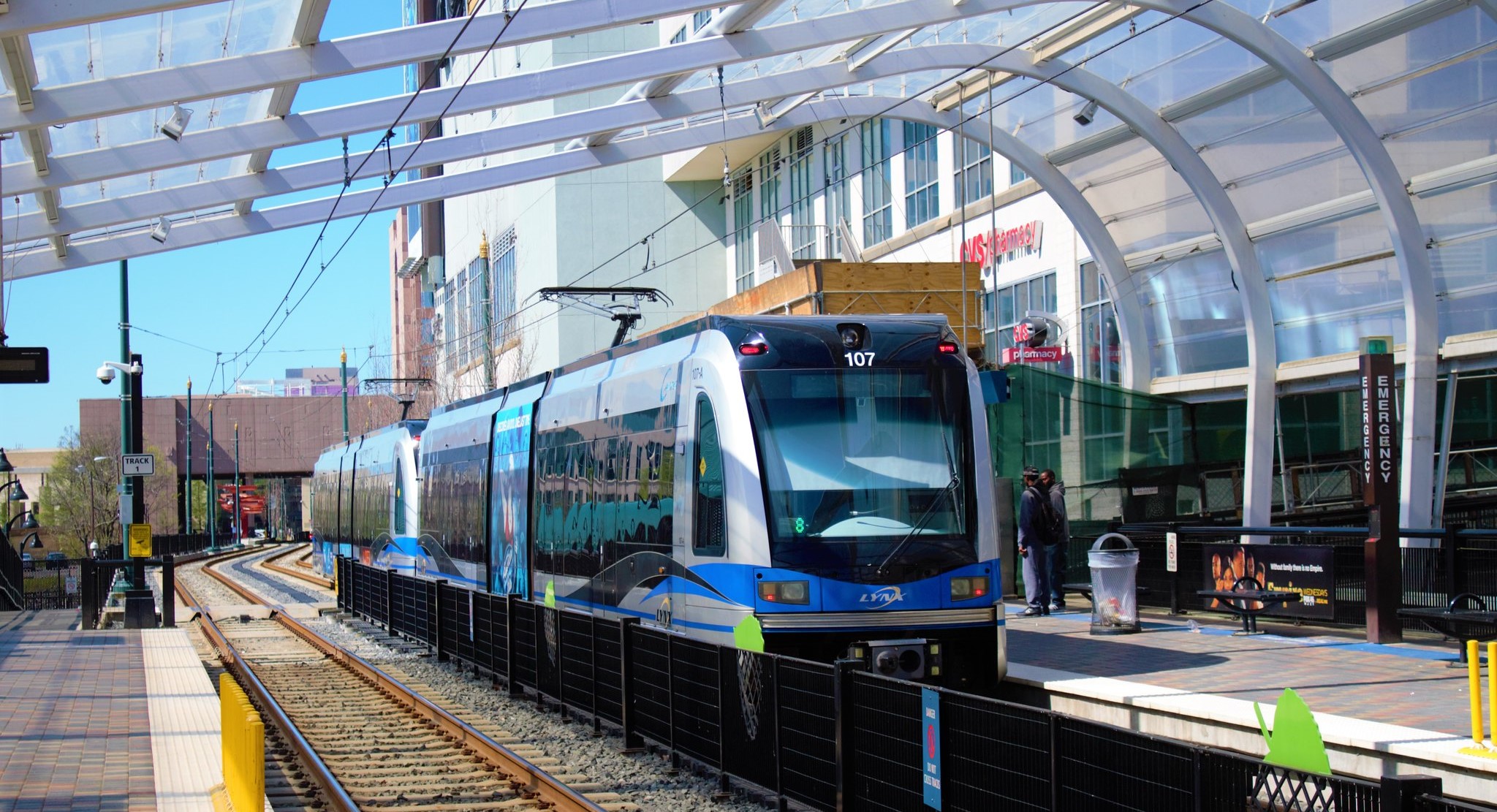Seven states have once again set a formal federal goal to increase pedestrian fatalities in 2024 — and according to a new report, most of them already rank among the deadliest states to walk in America.
According to advocacy group Smart Growth America, Alabama, Arkansas, Georgia, Hawaii, New Jersey, Oklahoma, and Tennessee hold the dubious distinction of both ranking in the top 20 for the highest per capita pedestrian deaths in America, and of being among the 13 states that were bold enough to set a 2024 "target" of vulnerable road user deaths and serious injuries that's actually higher than the number of casualties they recorded in previous years.
State transportation officials set those targets under a federal law which essentially requires them to report how many lives they expect to be able to save in the coming year — but doesn't specify anything about how those benchmarks should be set. And once they do, state departments of Transportation gain access to federal Highway Safety Improvement Program dollars, which, contrary to its auto-centric name, is actually one of the largest pots of money states use to build safe infrastructure on all their roads.
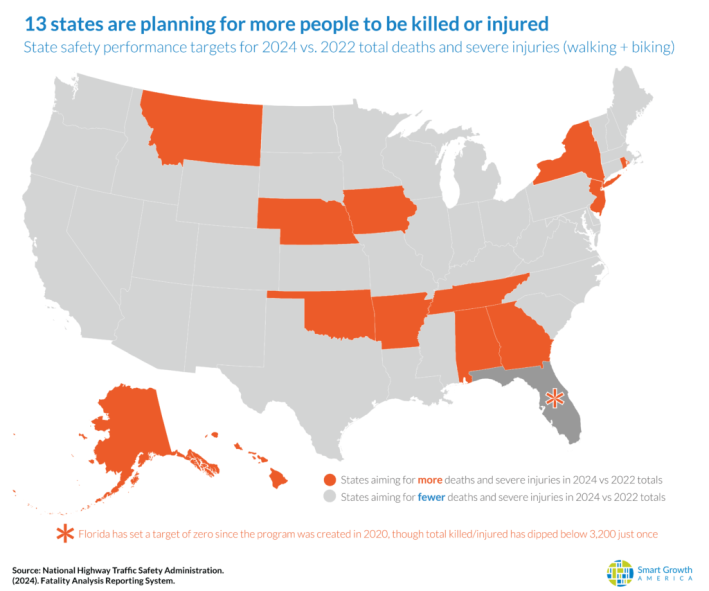
Communities that miss those self-created safety targets don't face significant penalties like losing access to HSIP funds. They do, however, have to submit a plan to do better next year, and are required to spend a certain amount of money on safety in the future rather than "flexing" it to other uses like nearly half of states do — which gives DOTs an incentive to avoid a bureaucratic hassle and grade their future death tolls on a curve.
"I definitely don't think anyone wants people to die on our roadways," clarified Heidi Simon, Smart Growth America's director of thriving communities. "But I think what these targets show is what kinds of commitments states are willing to make to address pedestrian safety against other competing priorities — and what funds and leadership they're willing to put behind them."
Simon stressed that while no state is sending out government vehicles to intentionally mow down walkers, regressive targets like these still send a chilling message that transportation officials aren't interested in holding themselves accountable for their role in the pedestrian death crisis.
In 2018, for instance, 18 states could technically claim that they'd beaten their vulnerable road user safety target for the year, but only because they padded out their expected death toll with a little extra bloodshed for good measure. That's slightly better than the six states that killed even more people than anticipated when they predicted more people would die in the year to come, but Simon says it's still unacceptable — and it's time for Congress to close this loophole.
"I don't think there's any defensible reason to set targets that show an increase in fatalities," Simon added. "And I definitely don't think it's defensible that a majority of states set their 2024 fatality targets above 2014 [actual fatality] levels. They're not even aiming to make enough progress to get us back to where we were 10 year ago — let alone now."
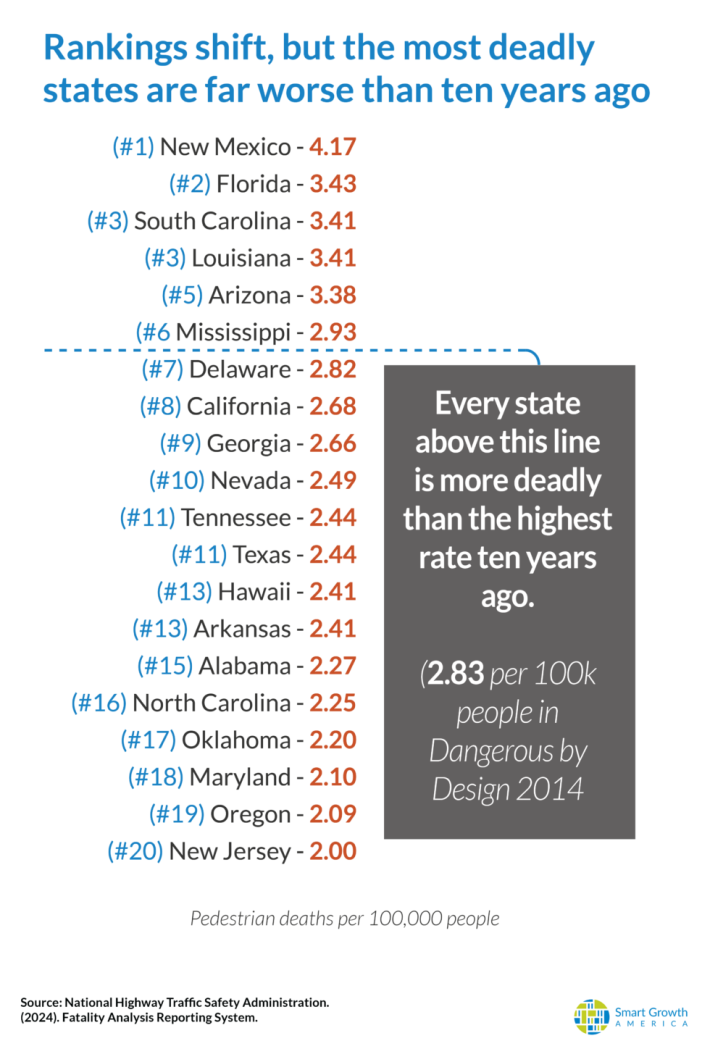
Of course, even the most aggressive fatality reduction goal can prove to be an empty promise. The single most dangerous state for walkers in America last year, New Mexico, did set a decreasing fatality target that it failed to meet last year; second-ranked Florida, meanwhile, has set a zero fatality target for years, and it's still reported more than 3,100 annual deaths since the tracking program again. (Despite a national commitment to Vision Zero announced in 2022, the Federal Highway Administration explicitly recommends against individual states setting a zero fatality goal in any given year, urging them instead to pick numbers that are "data-driven, realistic and achievable.")
Still, Simon argued that requiring states to at least try for declining fatality targets could be a critical first step towards eliminating road deaths altogether — if only to acknowledge the outsized role that the people who set those targets are playing in the crisis. In part because state-owned roads tend to be faster, wider, and more auto-oriented than local ones, a sobering 54 percent of all walkers who die in America lose their lives on rights of way that are under the direct purview of state DOTs, despite the fact that such roads make up just 20 percent of the nation's total road network.
"It's an important accountability measure, not only for states to be reporting [their safety targets] to the federal government, but more importantly, for individuals and advocates and others to know exactly what their state's priorities are, and what they expect to happen on their roadways," she added.
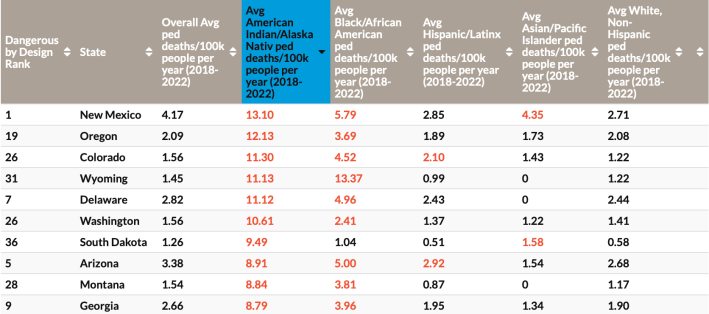
Some advocates argue that a better accountability measure wouldn't just require states to aim to reduce overall pedestrian deaths, but to reduce pedestrian death disparities between racially marginalized groups — disparities which Smart Growth America found to be just as horrifying in many states as they are nationally. In New Mexico, for instance, American Indian people experienced a per-capita pedestrian death rate more than three times higher than the overall population; in California, meanwhile, Black residents are more than twice as likely to die while walking than white ones.
However many ways they quantify it though, Simon argues that it's past time for state DOTs to do more to save walkers' lives — even if the federal government is giving them permission to set their ambitions low.
"It's about the safety culture — or, really, about the lack of one," she added.


